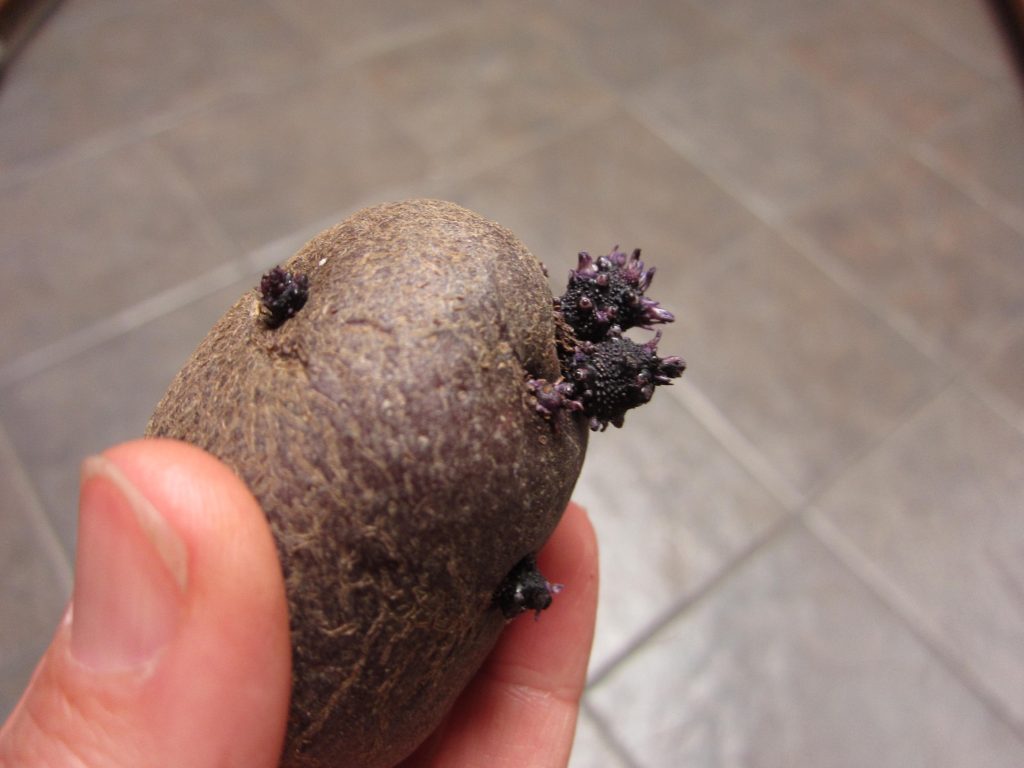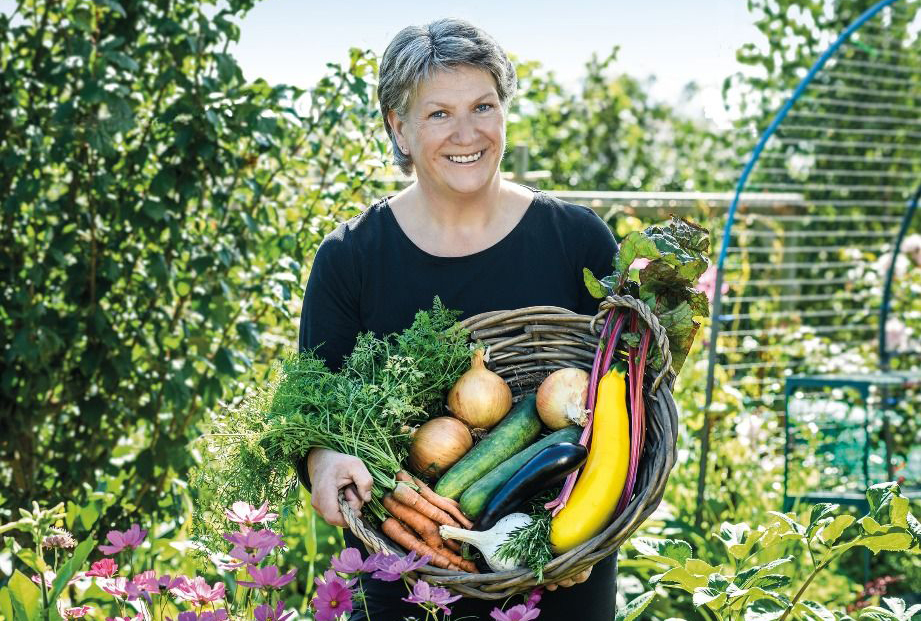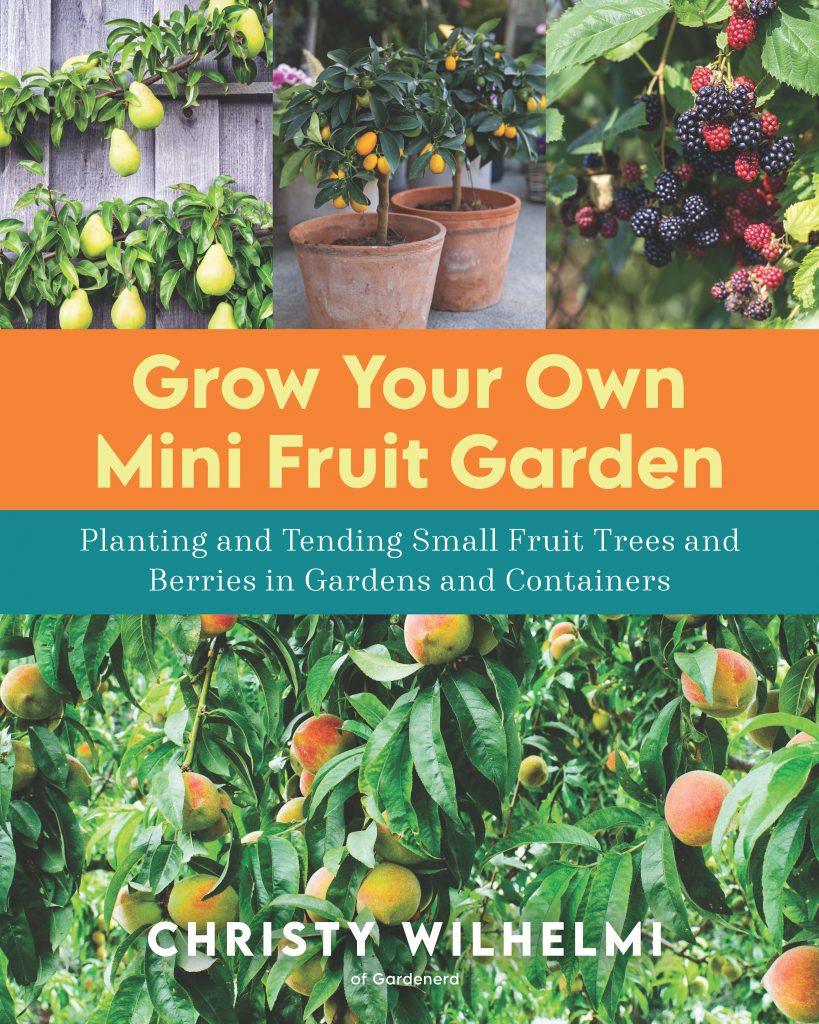
In this issue:
- October in the Garden
- Podcast: Small-Holdings with Liz Zorab
- Gardenerd Tip of the Month: Root-Knot Nematodes
- Gardenerd Product of the Month: Grow Your Own Mini Fruit Garden
October in the Garden
Here we go again! Things are finally cooling down, so it’s safe to plant out seedlings for cool-weather crops. As many gardens near the dormant season, we’re just ramping up for fall. I say this a lot, but it’s my favorite growing season. Why? Few to no bugs, maybe some rain, and tons of kale!
In the Test Garden this week, we’ve planted out the brassica seedlings. And we sowed seeds for radishes, carrots, parsnips, cilantro, and parsley. We’re planting potatoes and sowing seeds for Golden Guardian marigolds (see below for why). Believe it or not, we’re still harvesting tomatoes from a volunteer Azoychka that is still going strong. I spotted volunteer stinging nettles that popped up after one freak thunderstorm. Aren’t volunteers wonderful? If you want to take advantage of the impending rain, toss wild flower (or arugula/cilantro) seeds around your garden. They’ll make you happy in a month or so.
In this newsletter, you’ll find our latest Podcast, and a deep dive into root-feeding nematodes. We’re cooking up great things for spring, but for now we’re here to help you garden successfully this fall.
Happy gardening,
Christy

2. Podcast: Small-Holdings with Liz Zorab

Our latest podcast is a delightful chat with Liz Zorab, author of Grounded: A Gardener’s Journey to Abundance & Self-Sufficiency. Liz shares her tips and tricks for gardening on a tight budget and more.
Podcast: Small-Holdings with Liz Zorab
3. Gardenerd Tip of the Month – Root-Knot Nematodes

A lot of folks discover root-knot nematodes in their soil as they pull spent crops. Root-knot nematodes are predatory nematodes (there are beneficial nematodes but these aren’t) that pierce root walls and set up shop inside the root. This inhibits the plant from growing properly. We’ve had them once before, and here we go again – they showed up in our celeriac this summer.
But why do they show up? Here are a couple reasons:
Over Watering – When garden soils become saturated, anaerobic bacteria begins to grow because the environment now lacks oxygen. When anaerobic bacteria are present, beneficial nematodes depart. In addition, other microbes (namely bacteria and fungi – some of which feed on root-knot nematodes) die without oxygen. Without the beneficial microbes present, plants have no defense against predatory or root-knot nematodes. We had a leak in our irrigation…an invitation for bad nematodes to arrive.
Compaction – Compacted soils have the same effect as over watering. In compacted soil, soil particles are too close together to allow microbes to thrive. They die or leave, leaving your soil barren and plants defenseless.
The Solutions
Aerate Soils – by broadforking or using a digging fork – insert the tines straight down into the soil, and rock the fork back and forth to heave the soil up slightly. Repeat this until you’ve aerated the entire bed. We’re NOT talking about rototilling – that destroys your Soil Food Web and alters your soil texture, only making compaction worse later on. This technique keeps much of the soil aggregates together. It just opens up space between. Then throw biologically active compost on top and down in the gaps. You can also apply Active Aerated Compost Tea and water everything in (preferably with a hose filter in place).
Check Soil Moisture – while it’s important to keep soil moist for the sake of beneficial microbes and new seeds, know that surface moisture can drastically differ from soil moisture a few inches down. Learn to dig in to probe soils deeper down. A relative moisture meter can be your best friend. Check soil regularly and adjust irrigation as needed. Keep an eye on the 10-day forecast and turn off irrigation if a rain storm is coming.
Amend – With these solutions and regular amendments of biologically active compost, you will fortify your soil with beneficial microbes that will help fight off root-knot nematodes. You can also apply beneficial nematodes from suppliers like we demonstrate in this video.
Need More Info? Check out this blog post and this one to learn more about root-knot nematodes.
4. Gardenerd Product of the Month – Grow Your Own Mini Fruit Garden
Are you planning to plant a fruit tree this fall/winter for fresh fruit in spring? Christy’s new book, Grow Your Own Mini Fruit Garden, has everything you need to get started growing fruit in small spaces. Whether you have a balcony, patio, or back yard (or front yard…hey, we did that at Gardenerd HQ) you’ll find the best guidelines for designing your space, choosing the best varieties, planting and care, and so much more. If you are thinking of planting fruit trees this fall, Get your autographed copy today! Already have a copy? Get an autographed bookplate to go inside your copy. Click the link below for details.
We also have autographed copies of 2020’s Gardening for Geeks.
Stay tuned for more tips and tidbits from Gardenerd.com. Here we go again, gardenerds, so let’s have fun. Happy Gardening!

Search our archives here.

